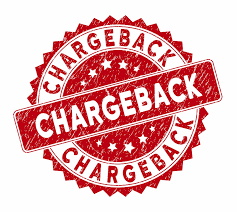A chargeback is when a customer disputes a transaction with their bank or credit card company and requests a refund. In ecommerce, this often means the funds are taken out of the seller’s account and returned to the customer—whether or not the product was actually faulty.
Chargebacks were originally designed to protect consumers from fraud, but they’ve become a growing challenge for online store owners. ecommerce chargebacks
Common Reasons Why Chargebacks Happen
Understanding the causes can help you prevent them from happening in the first place.
1. Fraudulent Transactions
One of the top causes of chargebacks is unauthorized use of credit cards. When someone uses a stolen card to make a purchase, the real cardholder will likely dispute the charge.
2. Customer Didn’t Recognize the Charge
Sometimes, the buyer may not remember or recognize a purchase on their bank statement and accidentally file a dispute.
3. Product Not as Described
If the product doesn’t meet the customer’s expectations or was misrepresented, they might request a refund via a chargeback instead of contacting support.
4. Item Never Arrived
If a product was lost in transit or delayed, and the customer didn’t receive it, they may file a chargeback thinking they were scammed.
5. Double Charges or Processing Errors
Mistakes like being charged twice or the wrong amount often lead to instant disputes.
The Hidden Costs of Chargebacks for Your Business
Chargebacks don’t just mean lost money. They come with a list of additional problems.
- Processing fees (usually $20–$100 per chargeback)
- Loss of inventory (you won’t get your product back)
- High chargeback ratios can damage your merchant account
- Account termination risk if the problem persists
- Time-consuming paperwork and evidence submission
How to Prevent Ecommerce Chargebacks
The good news is, you can take steps to reduce your risk. Here’s how:
1. Use Clear Billing Descriptors
Make sure the name that shows up on the customer’s bank statement matches your brand or store name. This prevents confusion and accidental disputes.
2. Offer Excellent Customer Service
Make it easy for customers to reach you via email, chat, or phone. A quick reply might prevent a refund request from turning into a chargeback.
3. Be Honest in Product Descriptions
Avoid exaggerations or misleading photos. Provide clear, high-quality images, accurate dimensions, materials, and expected delivery times.
4. Send Order Confirmations and Shipping Notifications
Keeping customers in the loop reduces complaints. Send tracking numbers and estimated delivery dates for every order.
5. Use Fraud Detection Tools
Use CVV verification, AVS (Address Verification System), and third-party fraud filters to catch suspicious orders before they go through.
6. Set Clear Refund and Return Policies
Make sure your policies are easy to find and understand. A flexible return policy can reduce chargebacks significantly.
What to Do If You Get a Chargeback
You can choose to either accept the chargeback or fight it (also called representment).
Gather Your Evidence
To dispute a chargeback, you’ll need to provide:
- Order confirmation
- Shipping confirmation
- Tracking details
- Customer communication
- Return/refund policy
Submit Through Your Payment Processor
Each processor (PayPal, Stripe, Square, etc.) has its own system. Be prompt—you often only have 7–14 days to respond.
Chargeback Ratio: Why It Matters
Your chargeback ratio is the percentage of chargebacks compared to total transactions.
Example: If you had 1 chargeback and 100 total transactions, your ratio is 1%.
Visa and Mastercard recommend keeping it below 1%. Exceeding this can lead to:
- Fines
- Account holds
- Even blacklisting
How Payment Gateways Help Reduce Chargebacks
Some payment processors offer built-in protections. Here are a few examples:
| Payment Processor | Built-in Chargeback Tools |
|---|---|
| PayPal | Seller Protection, Dispute Center |
| Stripe | Radar (fraud detection), Dispute support |
| Shopify Payments | Automated fraud analysis, Dispute management |
| Square | Dispute resolution tools, risk alerts |
Pro tip: Choose a provider that actively helps merchants manage chargebacks.
Chargeback vs Refund: What’s the Difference?
| Refund | Chargeback |
|---|---|
| Handled by the seller | Handled by the customer’s bank |
| Voluntary | Forced |
| Typically no fees | Usually includes processing fees |
| Lower risk to your reputation | Can hurt your business profile |
It’s always better to offer a voluntary refund when the situation allows—this gives you more control.
Final Thoughts: Stay Proactive, Not Reactive
Chargebacks are an unfortunate part of ecommerce, but they don’t have to destroy your profits or reputation. With the right tools, policies, and customer service in place, you can keep your chargeback rate low and your customers happy.
Key Takeaways:
- Most chargebacks are preventable with good communication and accurate product info.
- Track your chargeback ratio and work to keep it under 1%.
- Invest in fraud prevention tools and choose your payment processor wisely.
- Act fast when a dispute happens—gather strong evidence and respond promptly.
Would you like a downloadable checklist to help manage chargebacks in your online store? I can whip one up for you!
















